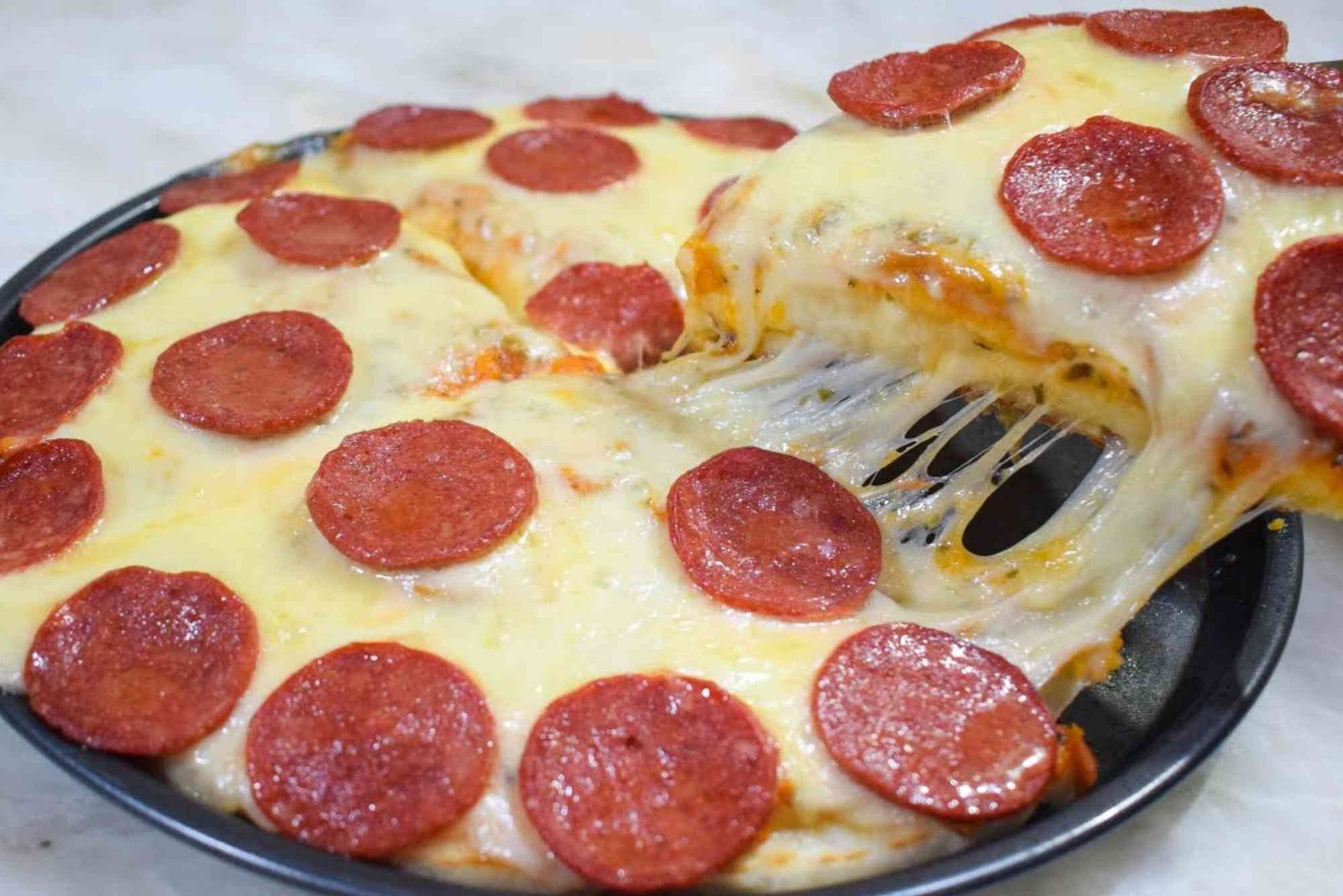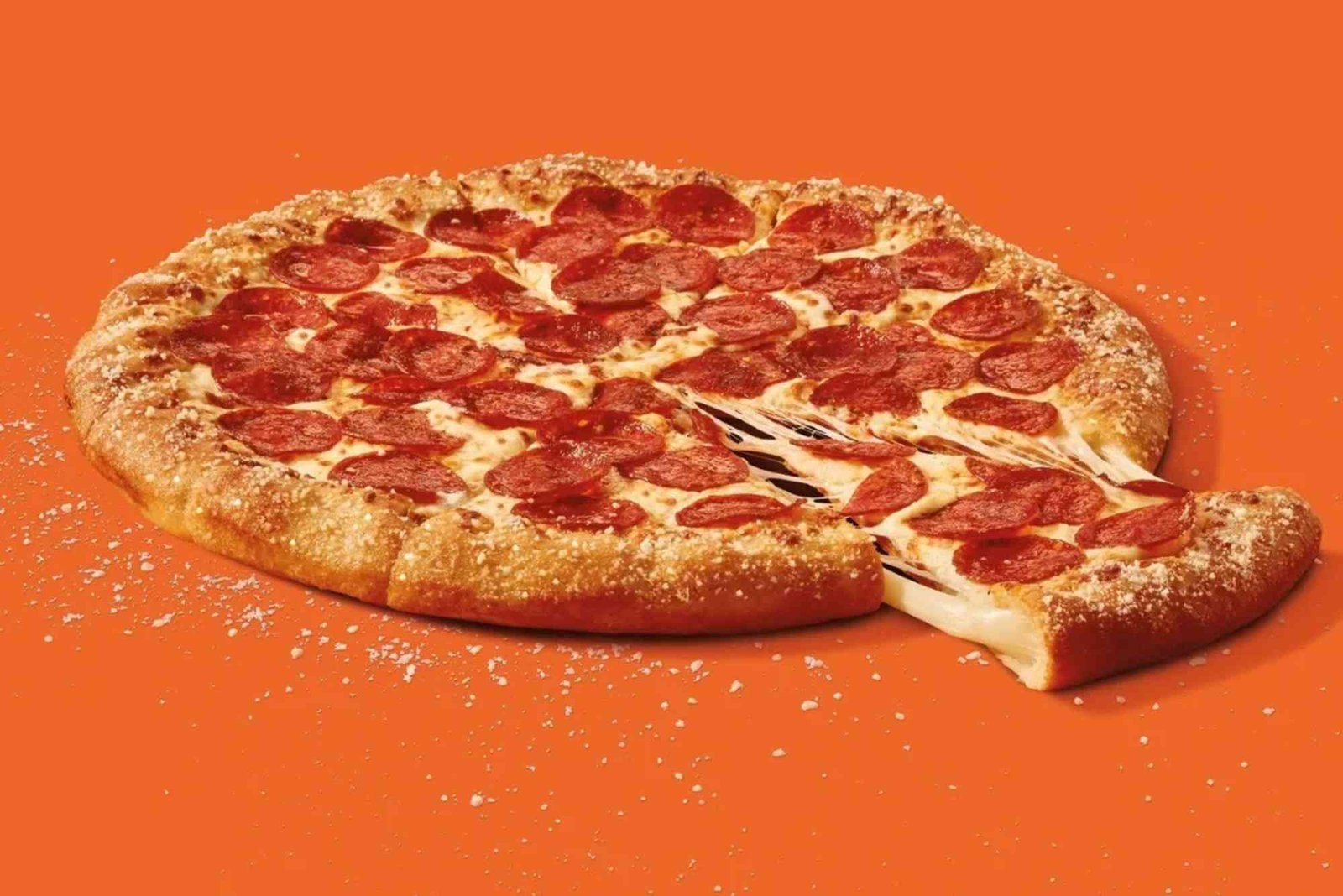Introduction
There’s something universally loved about a perfectly baked pepperoni pizza — the golden crust, bubbling cheese, and spicy slices of pepperoni make it a comfort food classic. Whether you’re a beginner or an aspiring home chef, this Step-by-step guide to making pepperoni pizza will help you master the process from dough to oven with ease. By following this simple guide, you’ll be able to enjoy authentic, pizzeria-quality pizza in your own kitchen.
The Secret to a Perfect Homemade Pepperoni Pizza
The best pepperoni pizza starts with three essential elements: the dough, the sauce, and the toppings. Each plays a crucial role in delivering that irresistible combination of chewy crust, tangy flavor, and melted cheese. Before diving into the actual process, let’s understand why homemade pizza tastes better than takeout.
When you make your own pizza, you control the ingredients — from the type of flour and cheese to the thickness of the crust. This means you can customize every bite to your liking. Plus, the process itself is rewarding and fun, especially when you see your family or guests enjoying a pizza you made from scratch.
Preparing the Pizza Dough
The foundation of every great pizza is the dough. Making it from scratch ensures a fresher, more flavorful crust. For this Step-by-step guide to making pepperoni pizza, we’ll use a classic Italian-style dough that’s soft on the inside and slightly crispy on the outside.
Start with high-quality all-purpose or bread flour. Mix it with yeast, a pinch of sugar, salt, warm water, and olive oil. Knead the dough until it’s smooth and elastic. This step helps develop gluten, which gives the crust its chewy texture. Cover the dough and let it rest for at least an hour, allowing it to rise and double in size.
Once it has risen, punch it down to release the air and divide it into portions if you plan to make multiple pizzas. Lightly flour your work surface and roll the dough into a circle, about 12 inches in diameter. Remember, don’t press too hard — stretching gently helps maintain the air pockets that make the crust airy and light.
Making the Pizza Sauce
A good sauce can transform your pizza. For the perfect pepperoni pizza, opt for a tomato-based sauce with a balance of acidity and sweetness. You can use canned San Marzano tomatoes, known for their rich flavor and smooth texture.
To make the sauce, sauté garlic in olive oil until fragrant. Add crushed tomatoes, salt, oregano, basil, and a pinch of sugar. Simmer the mixture for 15 to 20 minutes until it thickens. For extra depth, you can blend it until smooth. Allow it to cool before spreading it over your dough.
The right sauce-to-dough ratio is key. Too much sauce will make your pizza soggy, while too little will leave it dry. A thin, even layer works best.
Choosing the Cheese
Mozzarella is the traditional choice for pepperoni pizza, but not all mozzarella is the same. Use whole-milk, low-moisture mozzarella for that classic stretch and melt. Fresh mozzarella can also be used if you prefer a softer texture.
For added flavor, try blending cheeses — a mix of mozzarella, provolone, and parmesan can create a richer, more complex taste. Sprinkle your cheese evenly across the sauce, leaving a small border around the edges for the crust.
Adding the Pepperoni
Pepperoni is the star of the show. Choose high-quality slices with a balance of spice and fat. When baked, the edges of the pepperoni should curl slightly, creating little crispy cups filled with flavor.
Arrange the slices evenly over the cheese, avoiding overcrowding. This ensures that each bite has a perfect mix of cheese, sauce, and meat. Some people like to add a sprinkle of chili flakes or a drizzle of olive oil on top for an extra kick.
Baking the Pizza
Preheat your oven to its highest temperature, ideally between 475°F and 500°F (245°C–260°C). If you have a pizza stone, place it in the oven while it preheats — it will help you achieve that crisp, restaurant-style crust.
Transfer your prepared pizza onto the stone or a baking tray. Bake for 10–15 minutes, or until the crust turns golden brown and the cheese starts to bubble. Keep an eye on it to prevent overbaking.
Once it’s done, remove it from the oven and let it rest for a few minutes before slicing. This helps the cheese set and prevents the toppings from sliding off.
Serving Your Pizza
Slice your pizza using a sharp pizza cutter and serve immediately. You can pair it with garlic sauce, ranch dressing, or a side salad for a complete meal.
For an authentic Italian touch, sprinkle some crushed red pepper or drizzle a bit of extra virgin olive oil before serving.
If you want to explore more cooking ideas like this, check out How To Make A Pepperoni Pizza A Step By Step Guide for additional recipes and kitchen tips.
Tips for the Perfect Pepperoni Pizza
Achieving perfection takes a bit of practice, but these tips can make the process easier.
Use room-temperature dough — it’s easier to stretch and less likely to tear. Don’t overload your pizza with toppings. A balance of cheese and pepperoni ensures even cooking. If you prefer a crispier crust, pre-bake the dough for 3 minutes before adding the toppings. Always let your pizza rest before slicing to keep it intact.
Making pizza is not just about following a recipe; it’s about enjoying the process. Each batch teaches you something new — maybe your oven runs hotter, or you prefer thicker sauce. Embrace the learning curve.
Why Make Pepperoni Pizza at Home?
Homemade pizza offers freshness and flexibility that takeout simply can’t match. You can choose organic ingredients, adjust the salt level, and even experiment with gluten-free or whole-wheat dough. Plus, it’s often more economical and healthier than restaurant pizza.
There’s also something satisfying about creating your own masterpiece from scratch. The aroma of baking pizza fills your home, turning an ordinary evening into a special occasion.
Cooking together as a family can also be a bonding experience — kids love adding their own toppings, and everyone gets to enjoy the result.
For those interested in improving their cooking skills, this Step-by-step guide to making pepperoni pizza is a great starting point. You’ll not only learn how to make pizza but also understand the science behind perfect baking.
Frequently Asked Questions
What ingredients are needed for homemade pepperoni pizza?
You’ll need flour, yeast, water, olive oil, salt, tomato sauce, mozzarella cheese, and pepperoni slices. Optional ingredients include oregano, basil, and chili flakes for added flavor.
How long should I bake a pepperoni pizza?
Bake your pizza at 475°F–500°F for about 10–15 minutes. The exact time depends on your oven and the thickness of your crust.
Can I use store-bought dough for pepperoni pizza?
Yes, you can use store-bought dough if you’re short on time. However, homemade dough offers better texture and flavor.
What’s the best cheese for pepperoni pizza?
Whole-milk, low-moisture mozzarella is ideal for that classic stretchy texture. You can also mix it with parmesan or provolone for extra depth.
How can I prevent my pizza from being soggy?
Avoid using too much sauce or wet toppings, and make sure your oven is fully preheated before baking. A pizza stone can also help absorb excess moisture.
Can I make pepperoni pizza without an oven?
Yes, you can use a stovetop skillet or an air fryer. While the crust may differ slightly, the flavor remains delicious.
Healthier Variations of Pepperoni Pizza
If you’re conscious about calories, you can still enjoy pepperoni pizza guilt-free. Opt for a whole-wheat crust, low-fat mozzarella, and turkey pepperoni. Use less cheese and add more veggies like bell peppers or mushrooms for extra nutrition.
You can also experiment with cauliflower crust or gluten-free alternatives. Baking at home gives you control over every ingredient, helping you make healthier choices without sacrificing taste.
Final Thoughts and Call to Action
By now, you’ve learned everything from preparing dough and sauce to baking and serving in this Step-by-step guide to making pepperoni pizza. With a bit of practice, you can easily recreate your favorite restaurant pizza at home.
Whether you’re cooking for yourself, family, or friends, this recipe guarantees satisfaction. Remember to experiment, taste, and adjust — that’s what makes cooking fun.
For more delicious recipes and kitchen inspiration, visit Related Food article or Learn more about culinary techniques and food culture.












